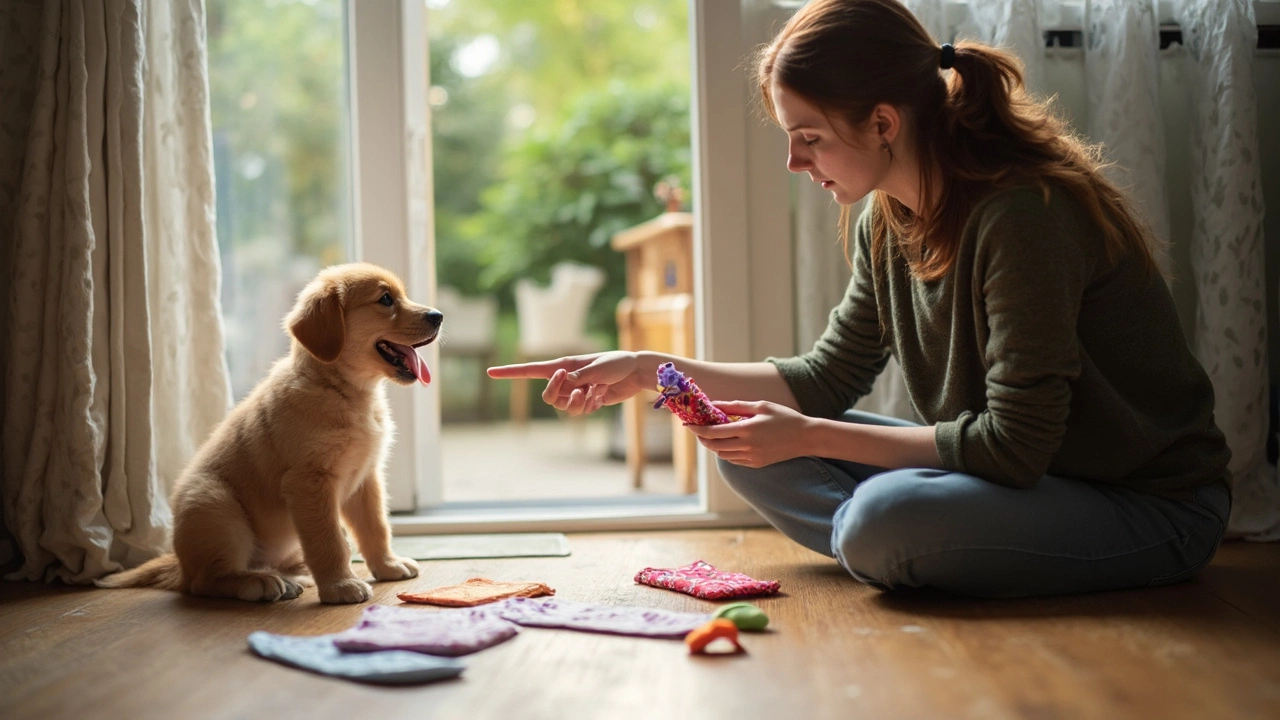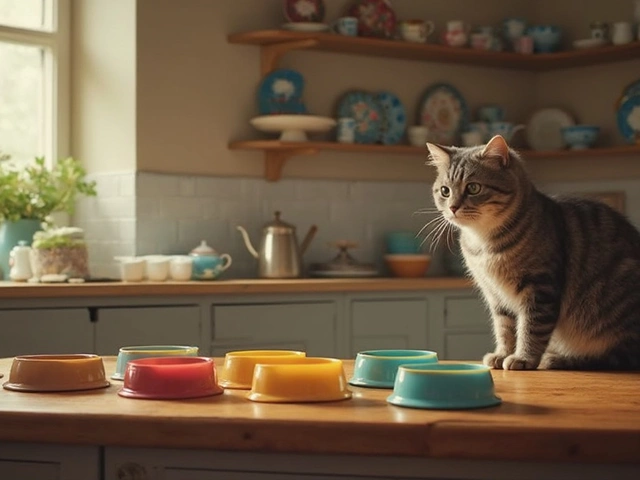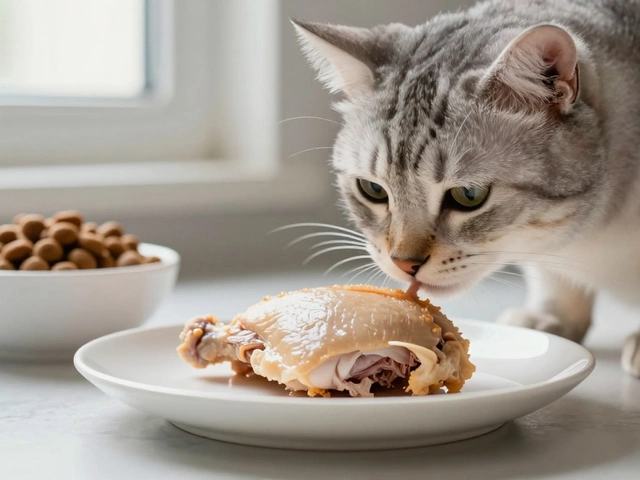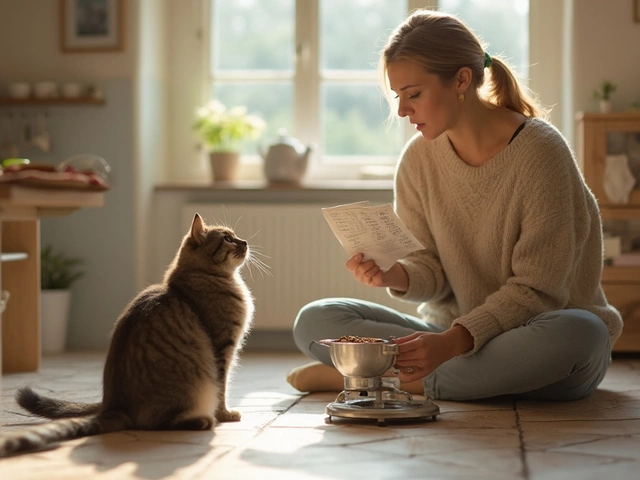Potty training a puppy feels like a full-time job at first, but it gets easier once you know what really works. Puppies can’t tell you when they need to go; they just sniff, circle, and go for it. So the faster you set clear rules and routines, the less mess you’ll clean up.
One thing people forget—location matters. Pick the spot outside where you want your pup to go and stick to it. Dogs are all about habits and smells. If they smell their own pee somewhere, they'll remember that’s the place. Grass, gravel, or even a puppy pad indoors—just stick to one spot and make it obvious from day one.
Skip the drama when accidents happen. It’s normal for puppies to slip up. Instead, focus on constant supervision and taking them out before they even get a chance to mess up. Most puppies can hold it for the number of hours equal to their age in months plus one. So, a two-month-old can last around three hours—at best.
And here’s an underrated hack—keep a couple of favorite puppy toys handy, but only bring them out when it’s potty time outside. This makes bathroom breaks fun, not just functional. It teaches your pup that doing their business in the right spot gets them more playtime. Double win!
Setting Up for Success
Before kicking off potty training, get your home and schedule ready. Puppies rely on their owner’s habits. Having a plan is half the battle. Experts recommend keeping your new puppy in a smaller, easy-to-clean area at first, like a gated section of your kitchen or a playpen. This cuts down accidents in hard-to-reach places.
It helps to pick out a designated potty spot before your puppy even comes home. Consistency is everything. Walk your pup on a leash to the same patch of grass or spot on the balcony every single time. Their super-strong noses will remember old smells, which programs them to go in the right place.
Stock up on cleaning supplies—an enzyme-based cleaner is way better than regular soap. Regular cleans just hide the smell from you, but puppies can still sniff out where they went last time, which can mess up potty training big time.
- Set up a daily feeding and potty schedule. Dogs do way better with routines.
- Get a few puppy toys that your pup can only get right after they go in the right spot. This turns potty breaks into something to look forward to.
- If you live in an apartment or can’t get outside fast, puppy pads work—but try to switch to outdoors as soon as you can.
Crates are useful if you use them right. Puppies don’t like to pee where they sleep, so a crate that’s just the right size (big enough to stand and turn around, not big enough for a corner bathroom) helps build bladder strength. Dogs are den animals by nature, and crates make them feel safe when used gently.
| Age (months) | Max Hours to Hold It |
|---|---|
| 2 | 3 hours |
| 3 | 4 hours |
| 4 | 5 hours |
If you’re consistent, organized, and have the right gear ready, housebreaking becomes a lot less stressful for everyone.
Timing and Supervision
You can't just set a schedule and hope your pup magically figures out potty training. Young puppies, especially under four months, have almost zero control. That means you’ve got to take charge and be one step ahead of them.
Start by knowing when puppies usually need to go: right after waking up, after eating, after playing, and about every couple of hours in between. Most trainers go by the rule: a pup can “hold it” for their age in months plus one hour. For example, a three-month-old can last about four hours, but only when they’re napping or not moving around. If your puppy is running around, cut that time in half.
| Puppy Age (Months) | Max Time to Hold (Hours) |
|---|---|
| 2 | 3 |
| 3 | 4 |
| 4 | 5 |
Supervision matters just as much as timing. If your pup is loose in the house, keep them in your sight. The moment you see sniffing, squatting, circling, or suddenly wandering off, scoop them up and get them outside quickly. Don’t wait for "the face"—by the time they look guilty, it’s too late.
If you can’t watch your puppy like a hawk (sometimes you gotta shower, right?), use a crate or a safe pen. A crate-sized just big enough for your pup to stand, turn, and lie down works best because dogs don't want to potty where they sleep. Rotate between playtime, naps in the crate, potty breaks, and repeat. This routine keeps accidents low and learning fast.
Apps and timers help too. There are even puppy potty training apps where you can track “last potty” and set reminders, making schedules less of a guessing game. And if you're juggling work or kids, these can be lifesavers.
The more focused you are on timing and supervision, the faster your housebreaking will click for both you and your puppy. Rushing it or skipping steps just leads to messes and frustration for everyone.
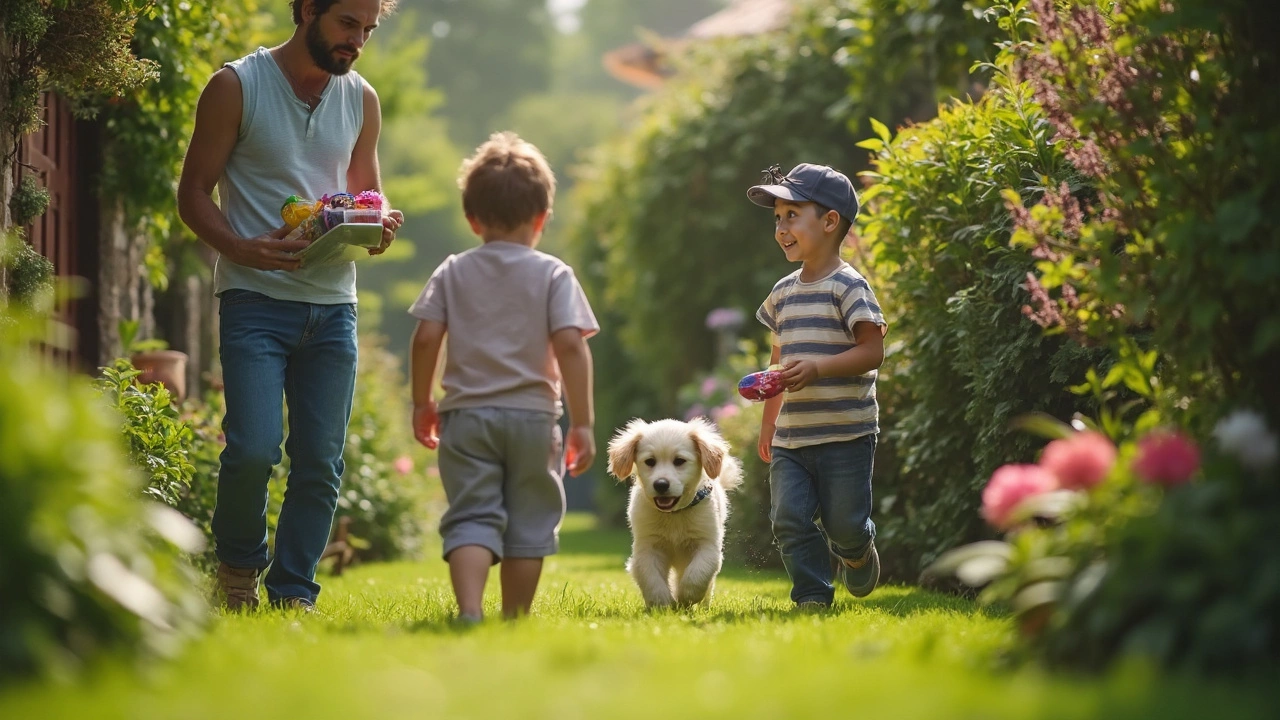
Using Toys and Rewards
Rewards aren’t just treats—they can be anything your puppy loves, and puppy toys are secret weapons for making potty training actually stick. When you bring a toy into the routine, it turns bathroom breaks into game time, which means your puppy pays attention and looks forward to going outside.
The trick is to use special toys your puppy doesn’t get all the time. Keep a squeaky ball or soft plush in your jacket pocket and only hand it over right after your pup pees or poops in the right spot. They quickly link the act of doing business in the right place to getting something awesome. Here’s how you can use puppy toys and rewards to your advantage:
- Pick the right toy: Go for smaller, easily washable toys. Think tug ropes, squeakers, or chew toys. Avoid anything that breaks apart too easily.
- Timing is everything: Hand over the toy the second your pup finishes. This makes the reward clear and directly links the action with the fun.
- Mix up the rewards: Even if you’re mostly using toys, throw in a treat or some extra praise once in a while to keep your puppy guessing (and motivated).
- Short play sessions: Don’t let play drag on forever. Two minutes of special toy time is enough. Then, put the toy away until the next successful potty break.
- Be consistent: Use the same system every time. Consistency helps your puppy understand what’s expected faster.
Dogs are simple—they repeat what gets them good stuff. Some trainers believe toys can be even more motivating for high-energy breeds compared to treats, since the play itself becomes a reward. In a UK study from 2022 (published in the Journal of Veterinary Behavior), about 64% of owners said their pups responded better to toy-based rewards during potty training than treats alone.
| Reward Type | Owner Reported Success Rate |
|---|---|
| Toys Only | 41% |
| Treats Only | 28% |
| Toys & Treats Mixed | 64% |
If you notice your puppy seems to care more about play than kibble, lean into that and use puppy toys as your main motivator. It makes toilet training less of a chore (for both of you!) and can help build a positive, excited attitude every time you head out for a bathroom break. It’s simple: the more fun you make it, the faster your puppy learns.
Dealing with Accidents
No matter how careful you are with potty training, your puppy will have accidents. It’s not your fault, and honestly, it isn’t your puppy’s fault either. Little bladders just aren’t built for marathon holding sessions. The real trick is how you react. The goal here is to teach, not scare or punish.
First off, catch them in the act? Quick, say “outside!” and scoop them up. Bring them to their potty spot, let them finish if they still need to go, and give gentle praise. If you find a puddle after the fact, skip the scolding. Puppies don’t connect the mess with your reaction unless you literally catch them mid-squat. Instead, just clean it up thoroughly—even if it’s carpet and a hassle.
Why such a big deal with the cleaning? Dogs have an amazing sense of smell. If they sniff out an old accident spot, they’ll think, "Ah, this is my toilet." You need an enzymatic cleaner—regular soap doesn’t break down the stuff in urine that triggers the urge to go again. As Dr. Sophia Yin, a vet and behaviorist, put it:
“Punishing your puppy for accidents only teaches them to hide where they go, not to stop having accidents.”
Some real-world stats: PetMD reports that most puppies need three to six months to be fully housebroken. But even adult dogs have the odd slip-up in a new home. It happens.
Here’s what works best when accidents happen:
- Stay calm. Getting angry just confuses your puppy and slows learning.
- Use a paper towel to soak up as much as possible, then use an enzymatic cleaner on the spot.
- Double-check the area after an hour. Sometimes, the smell lingers even if you can’t see it.
- Up your supervision. If you keep having accidents, keep your puppy closer—think leash, crate, or pen. Freedom is earned over time.
If you’re seeing a pattern—always in one room, or after naps—that’s your cue. Change the routine, let your puppy out more often, and bring some puppy toys to make it positive!
